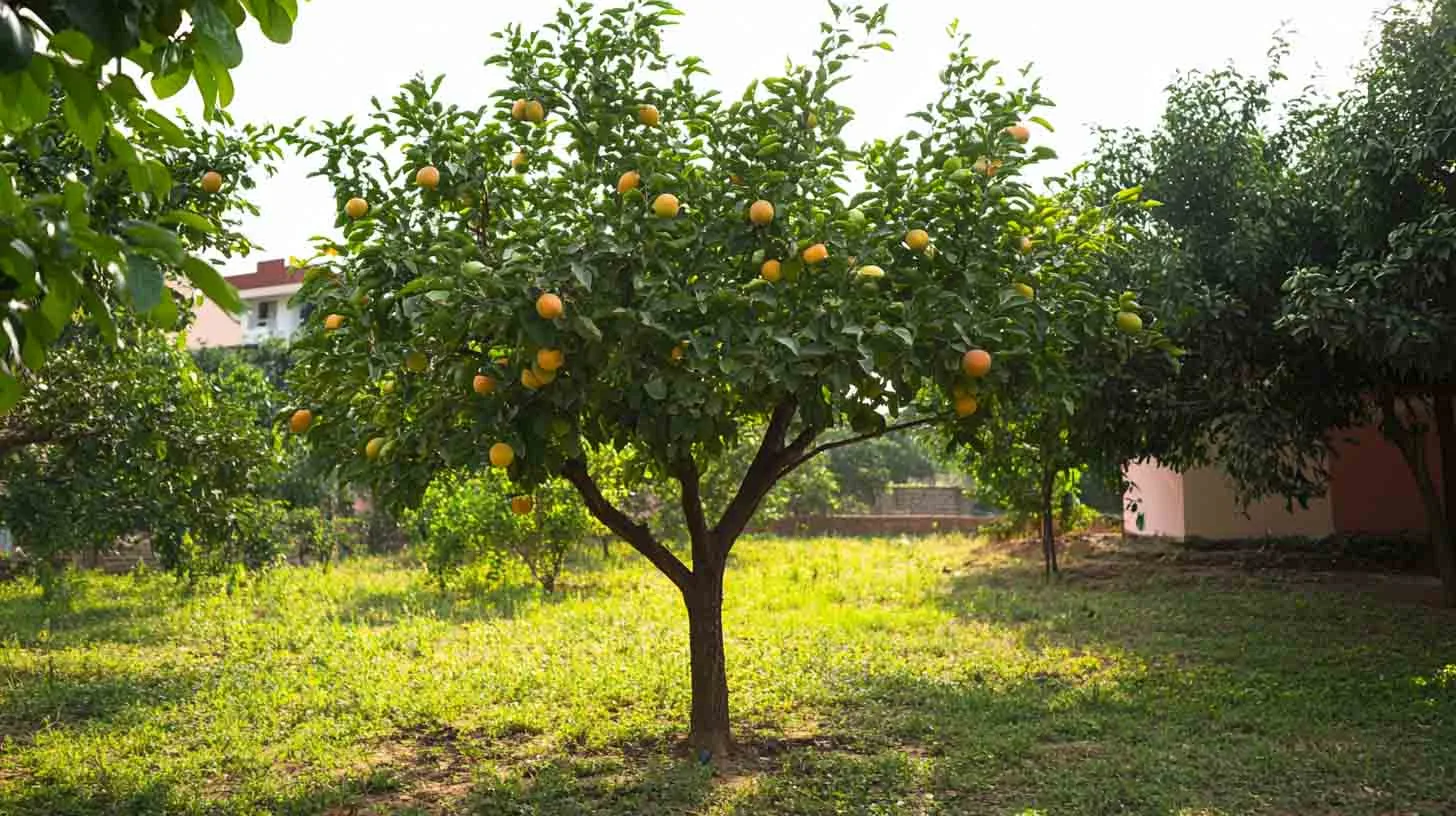If you’re lucky enough to garden in USDA Zone 8, let me tell you, you’ve got options. I live in a Zone 8 area, and honestly, it’s like nature gave us the VIP pass to grow some of the tastiest fruit right in our backyards.
Whether you’re craving crisp apples, juicy peaches, or fresh figs off the tree, Zone 8 delivers the perfect climate balance for a variety of fruit trees.
Below, I’ve put together my personal go-to list of 14 fruit trees that thrive in Zone 8, tried, tested, and snack-approved!
Why Zone 8 is a Fruit Tree Paradise
Zone 8 is like that sweet spot in the gardening world. Winters don’t get too harsh, and summers bring the perfect warmth most fruit trees dream about.
Here’s why it’s so good:
- Mild Winters mean less risk of frost damage.
- Long Growing Seasons give trees enough time to flower, fruit, and mature.
- Warm Days + Cool Nights help develop flavor and sweetness, yes, the magic of perfect peaches and plums!
If you’ve ever had the urge to grow a mini orchard, Zone 8 has your back.
1. Apple Tree (Malus domestica)
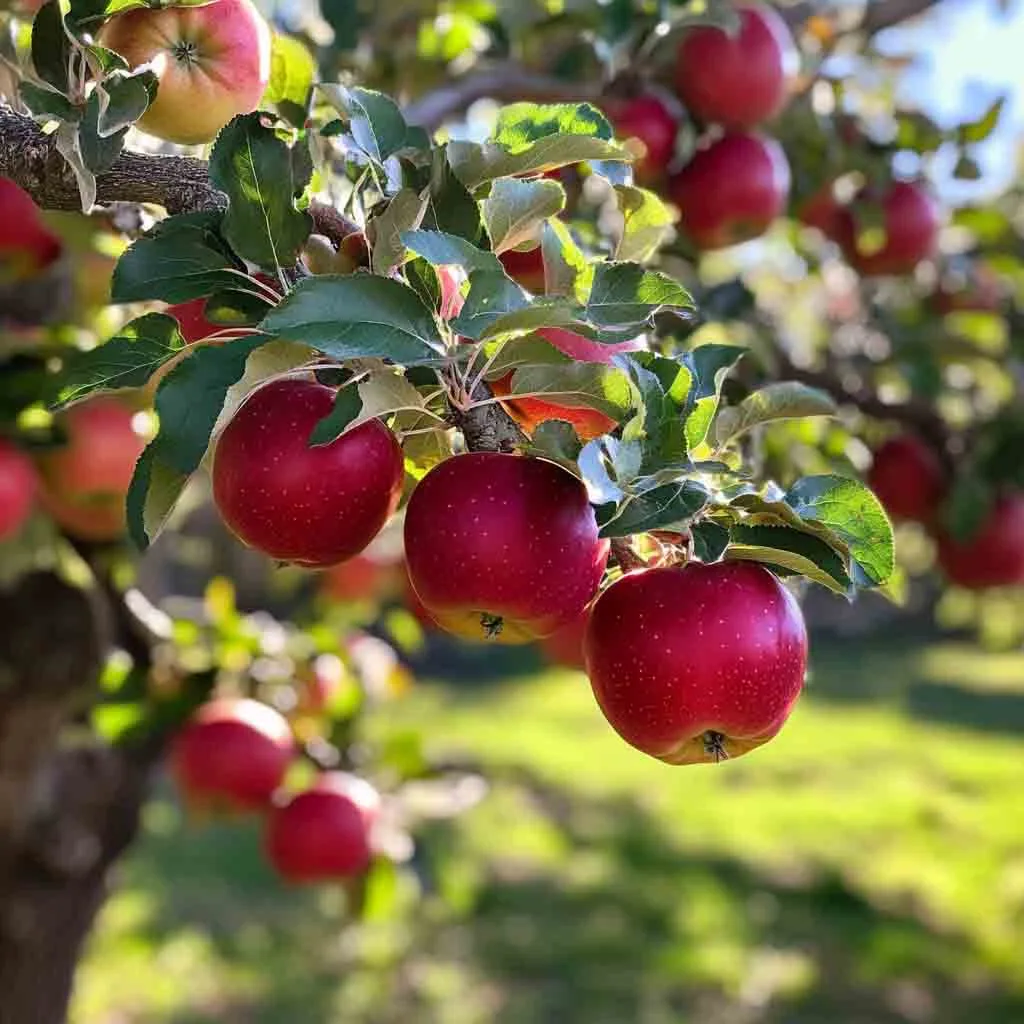
I planted a Granny Smith and a Fuji in my backyard, and let me just say, it’s a game changer.
- Cold-hardy enough for the mild winters
- Needs 400–1,000 chilling hours, which fits Zone 8 perfectly
- Great choices: Fuji, Gala, Honeycrisp, Granny Smith
Design Tips:
- Plant two different varieties for cross-pollination
- Needs full sun and well-drained soil
- Thin fruit early in the season for larger apples
2. Peach Tree (Prunus persica)
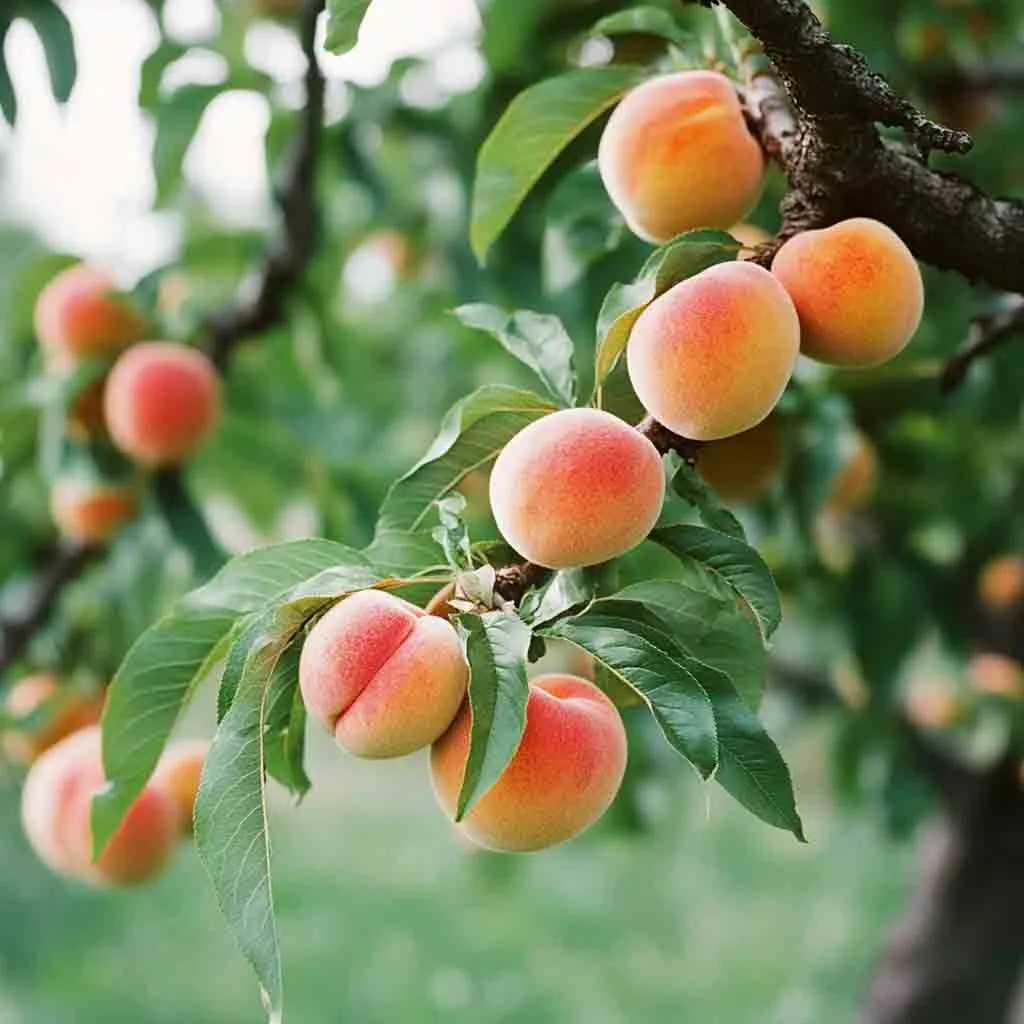
Nothing beats a homegrown peach. The juicy kind that drips down your chin, pure summer.
- Thrives in Zone 8 heat
- Requires 600–900 chill hours
- Produces fruit in 2–3 years
Quick Tips:
- Prune annually for shape and air circulation
- Look for freestone varieties for easy pitting
- Great options: Elberta, Redhaven, Belle of Georgia
3. Plum Tree (Prunus domestica)
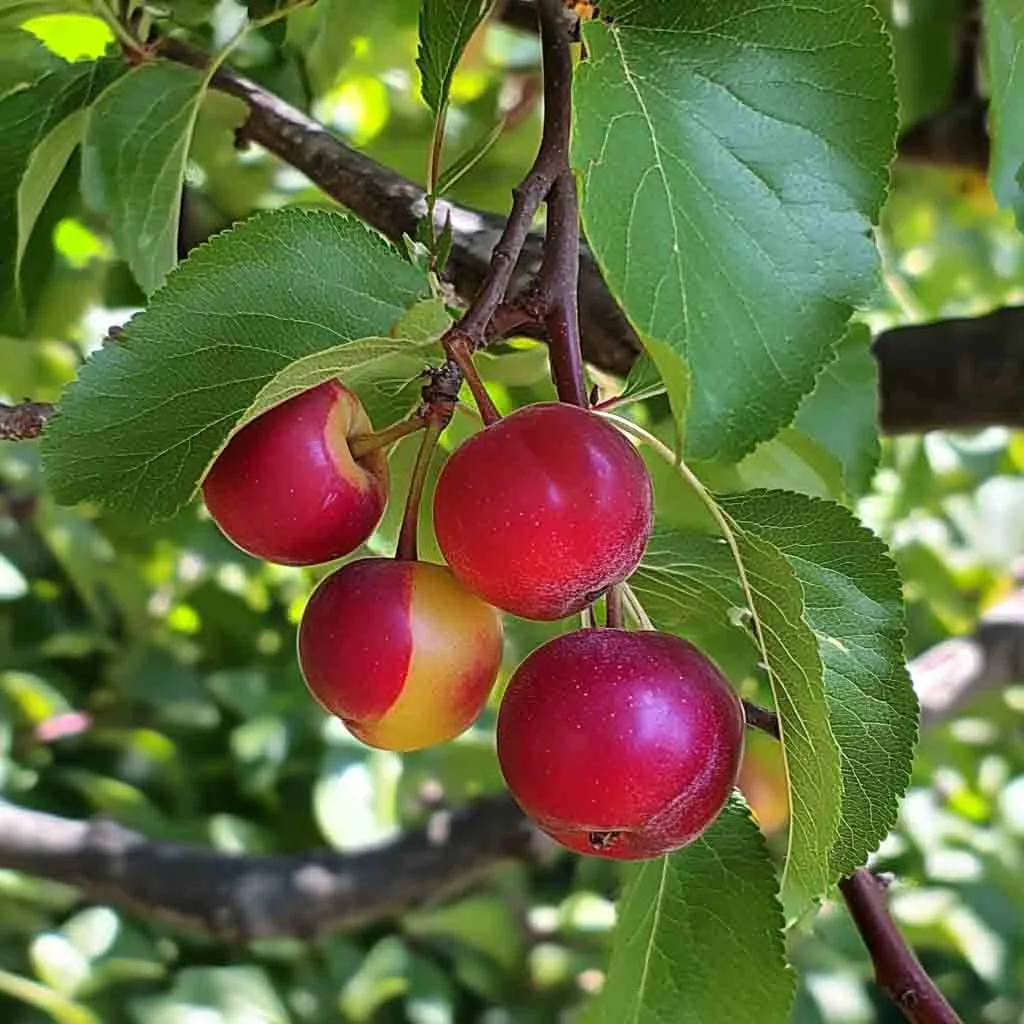
Plums are ridiculously underrated. I snack on them fresh, or sometimes stew them with cinnamon for a cozy dessert.
- European and Japanese types both do well
- Needs moderate chill hours
- Self-pollinating options are available
Key Points:
- Santa Rosa and Methley are Zone 8 favorites
- Enjoys slightly acidic, well-drained soils
- Regular pruning encourages better fruiting
4. Fig Tree (Ficus carica)
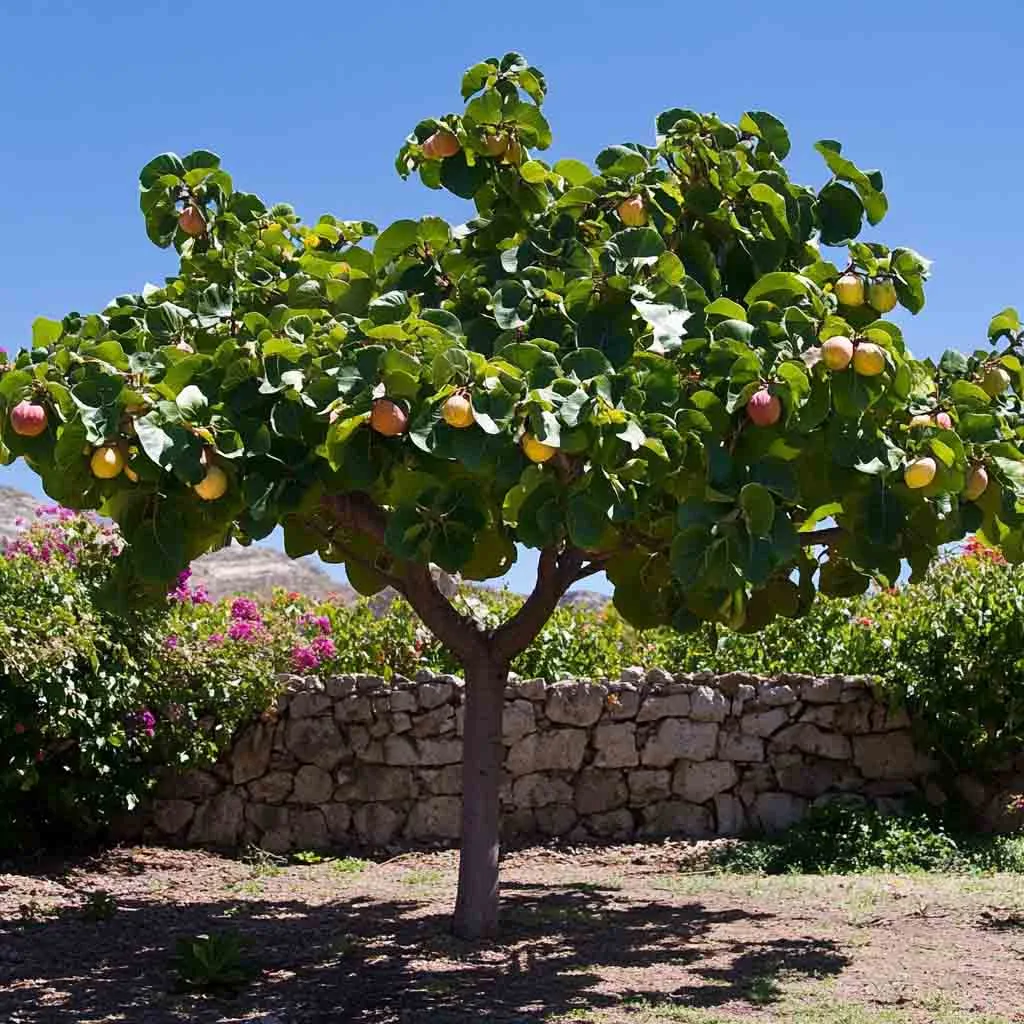
Figs feel exotic but grow like champs here. And they’re so good with cheese and honey.
- Loves the heat and tolerates short cold snaps
- Starts producing within a year or two
- Low maintenance and mostly pest-resistant
Varieties to Try:
- Brown Turkey (my fave)
- Celeste
- LSU Purple (especially great in humid spots)
5. Pear Tree (Pyrus communis)
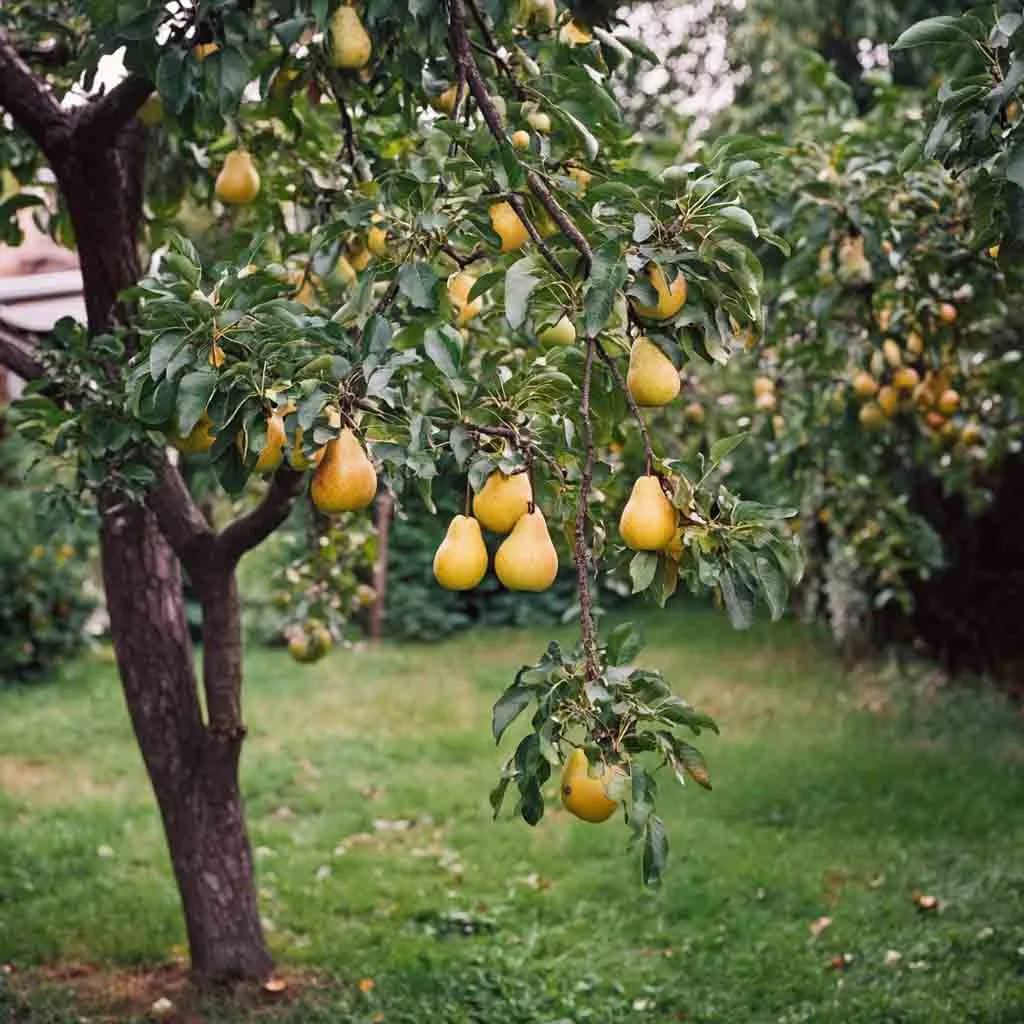
I added a Bartlett pear to my garden, and now I get crisp, juicy pears right off the branch in late summer.
- Handles cold better than most fruits
- Needs cross-pollination, plant 2 different types
- Reliable performers: Bartlett, Kieffer, Moonglow
Care Notes:
- Needs well-draining soil
- Watch out for fire blight, a common pear disease
- Thin the fruits to avoid limb breakage
6. Persimmon Tree (Diospyros kaki)
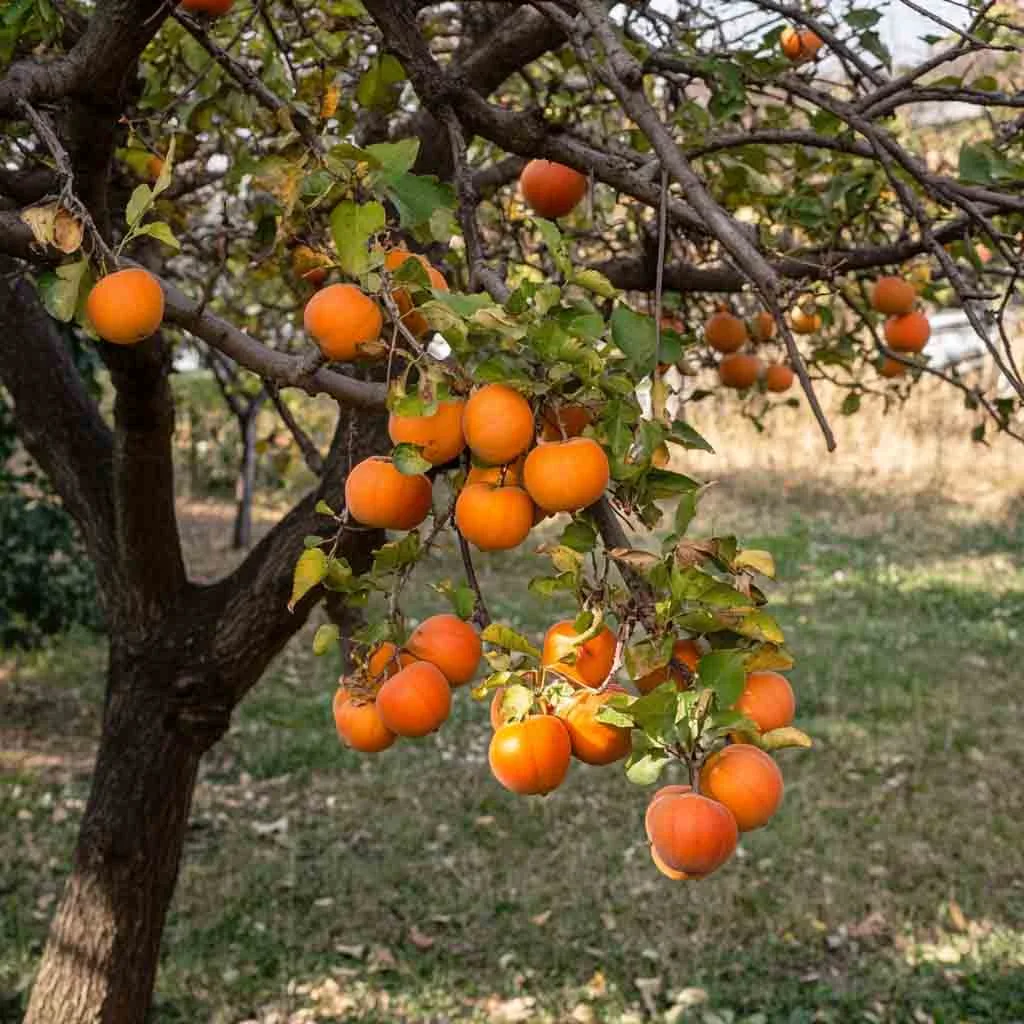
If you haven’t tried a ripe persimmon, please fix that. They’re sweet, custardy, and slightly floral.
- Excellent cold tolerance for Zone 8
- Comes in astringent (Hachiya) and non-astringent (Fuyu) types
- Low-maintenance and beautiful in fall
Tips:
- Fuyu is great for fresh eating
- Needs full sun to ripen properly
- Watch for late frosts with young trees
7. Cherry Tree (Prunus avium or Prunus cerasus)
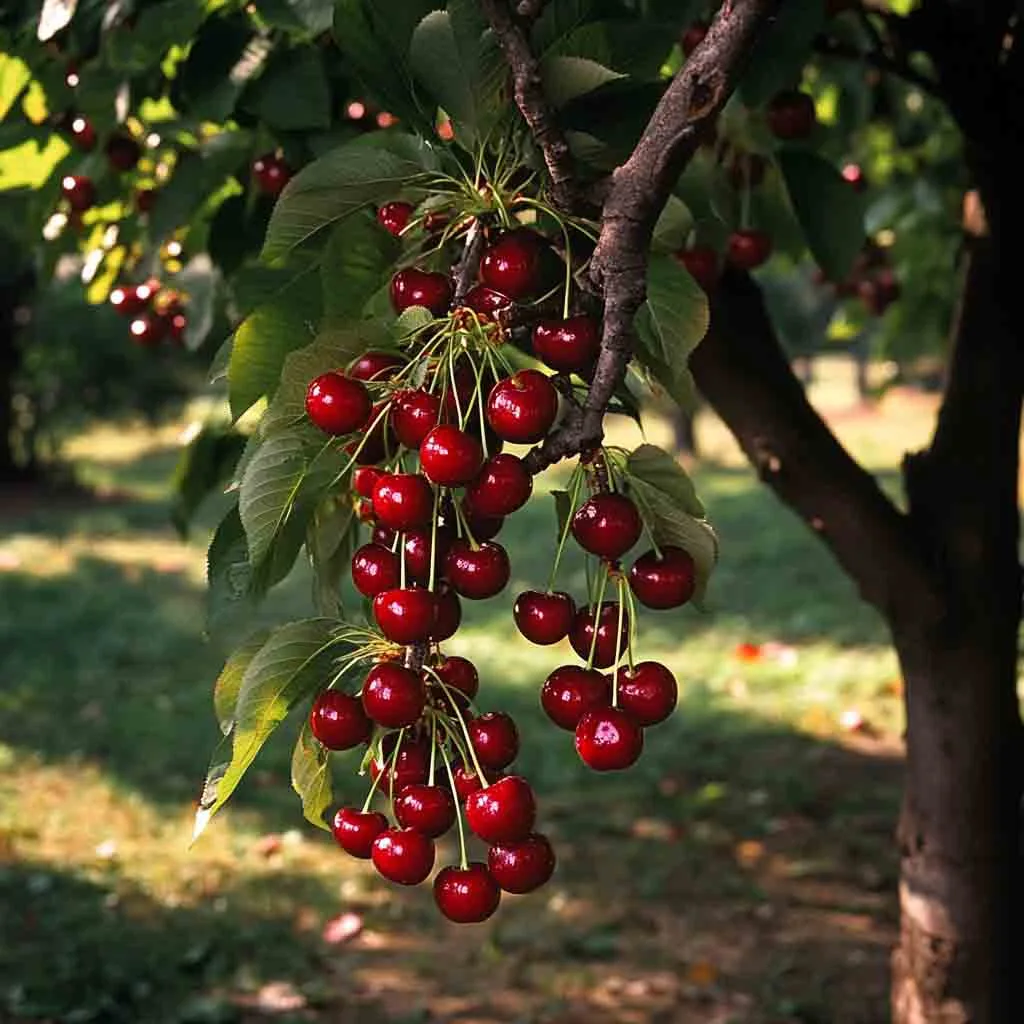
Zone 8 is tricky for cherries, but with the right variety and care, they’ll flourish.
- Needs proper chill hours, choose low-chill varieties
- Self-pollinating options available (like Stella)
- Beautiful spring blossoms
Cherry Must-Knows:
- Needs deep, well-drained soil
- Birds love cherries, netting might be necessary
- Water consistently during fruiting season
8. Pomegranate Tree (Punica granatum)
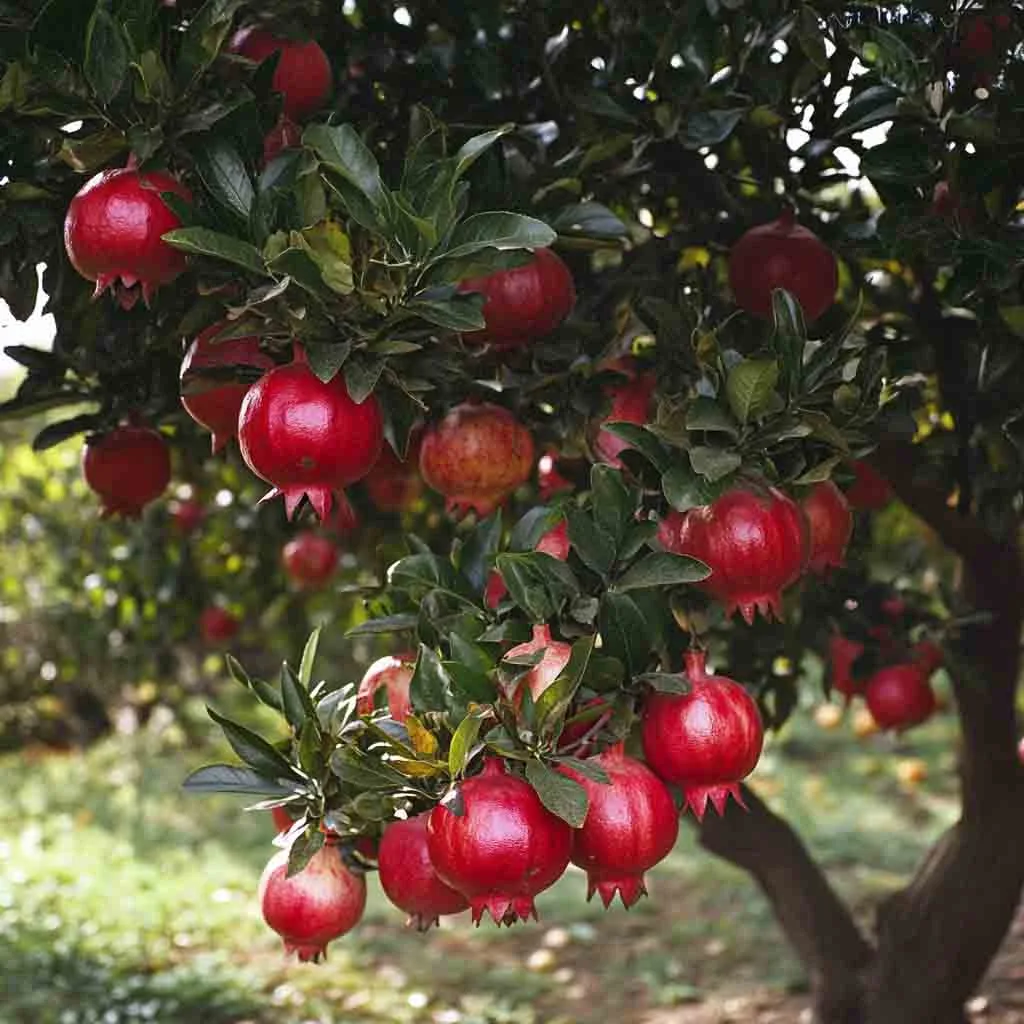
These beauties look ornamental but pack a nutritional punch too.
- Heat-loving and drought-tolerant
- Zone 8 pushes the limit, choose cold-hardy types
- Bears fruit in 2–3 years
Top Varieties:
- Wonderful
- Eversweet
- Parfianka
Care Tips:
- Protect young trees in colder snaps
- Prune to encourage air circulation
- Harvest when fully red and slightly heavy
9. Apricot Tree (Prunus armeniaca)
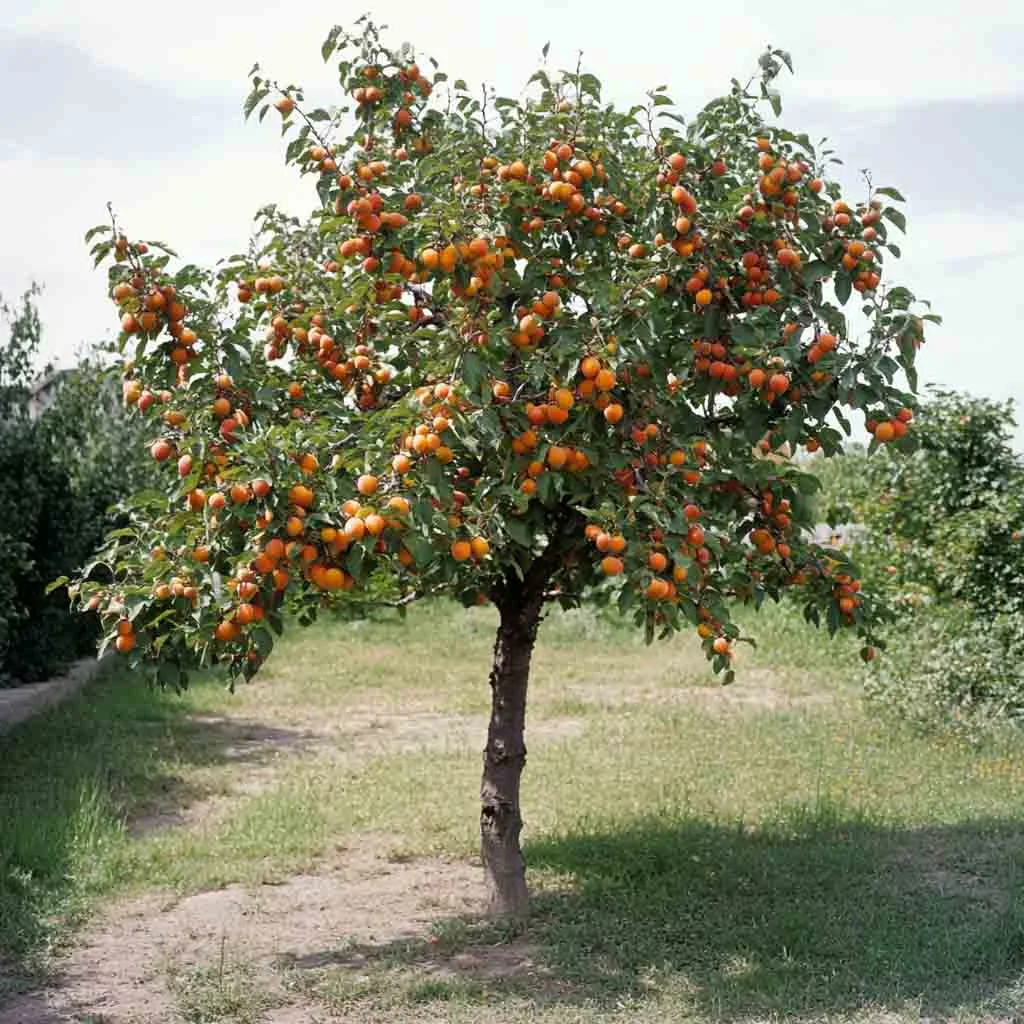
Apricots are a little high-maintenance, but when they succeed, they’re amazing.
- Requires low to moderate chill hours
- Flowers early, late frosts can be an issue
- Produces in 3–4 years
Best Practices:
- Plant in a sheltered spot
- Goldcot and Katy are Zone 8 friendly
- Fertilize lightly in spring and summer
10. Nectarine Tree (Prunus persica var. nucipersica)
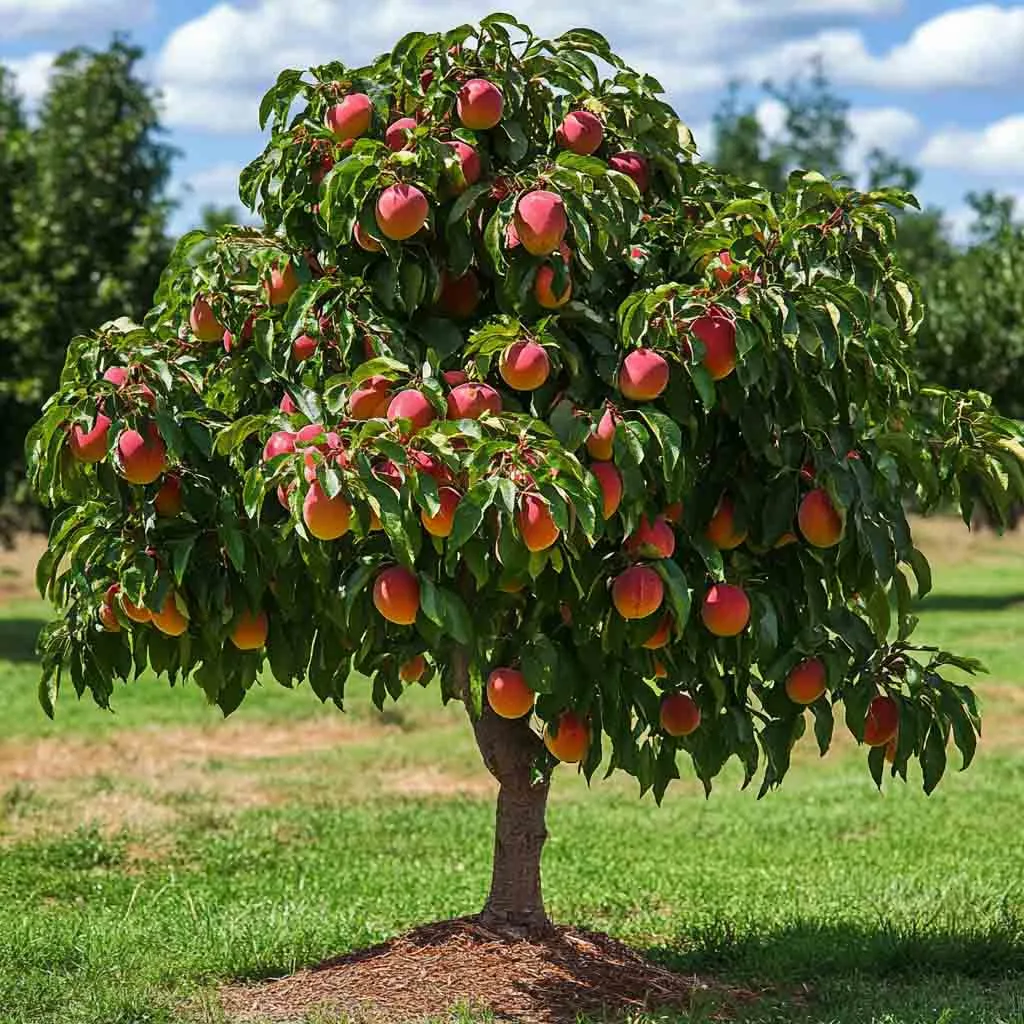
Basically a fuzz-free peach. I love how smooth and juicy they are, especially fresh off the tree.
- Needs full sun and good air flow
- Moderate chill hours work well in Zone 8
- Varieties like Fantasia and Sunglo thrive here
Nectarine Tips:
- Keep up with pruning and thinning
- Watch for peach leaf curl
- Harvest when fruit is slightly soft to touch
11. Jujube Tree (Ziziphus jujuba)
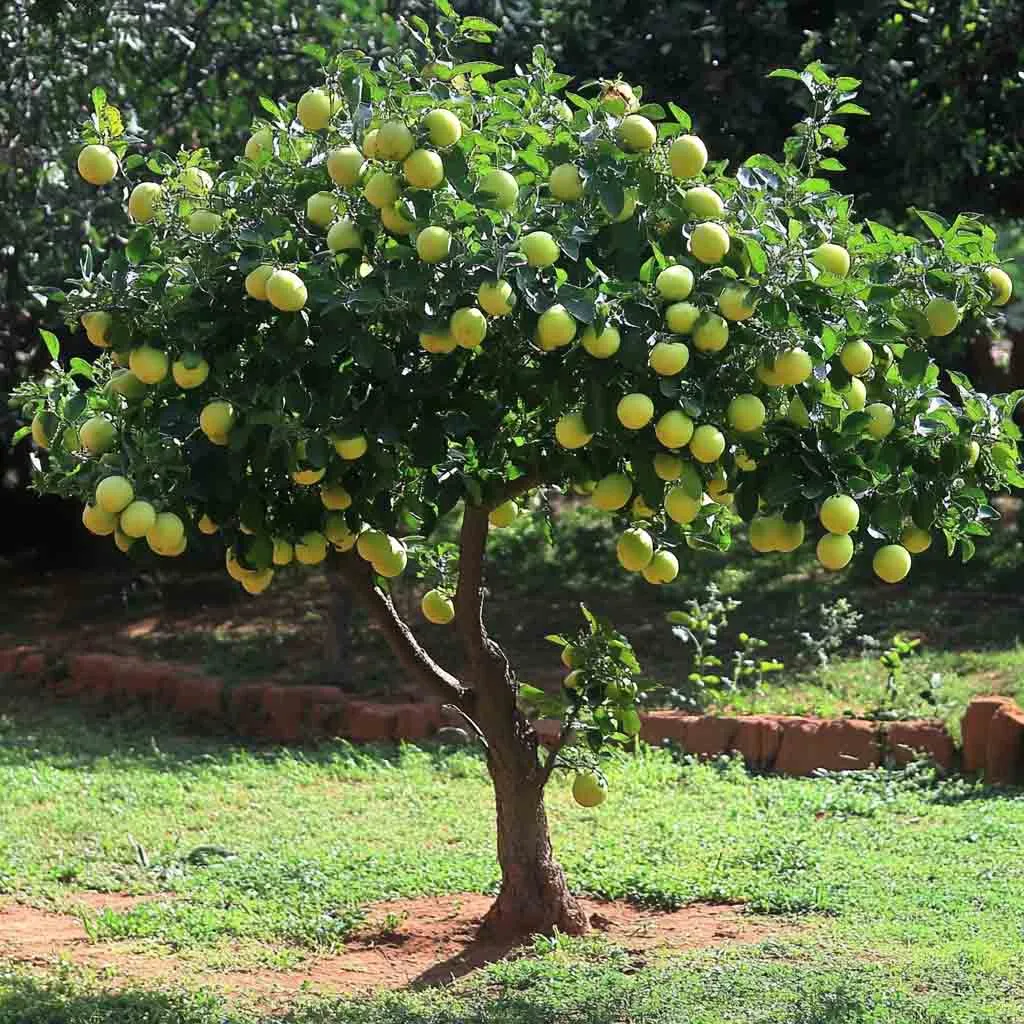
Jujubes are quirky little trees with crisp, apple-like fruit when fresh, and chewy like dates when dried.
- Tolerates heat, drought, and poor soil
- Easy to grow and nearly pest-free
- Needs full sun and well-drained soil
Popular Varieties:
- Li (larger, sweet)
- Lang (drier, great for drying)
12. Mulberry Tree (Morus spp.)
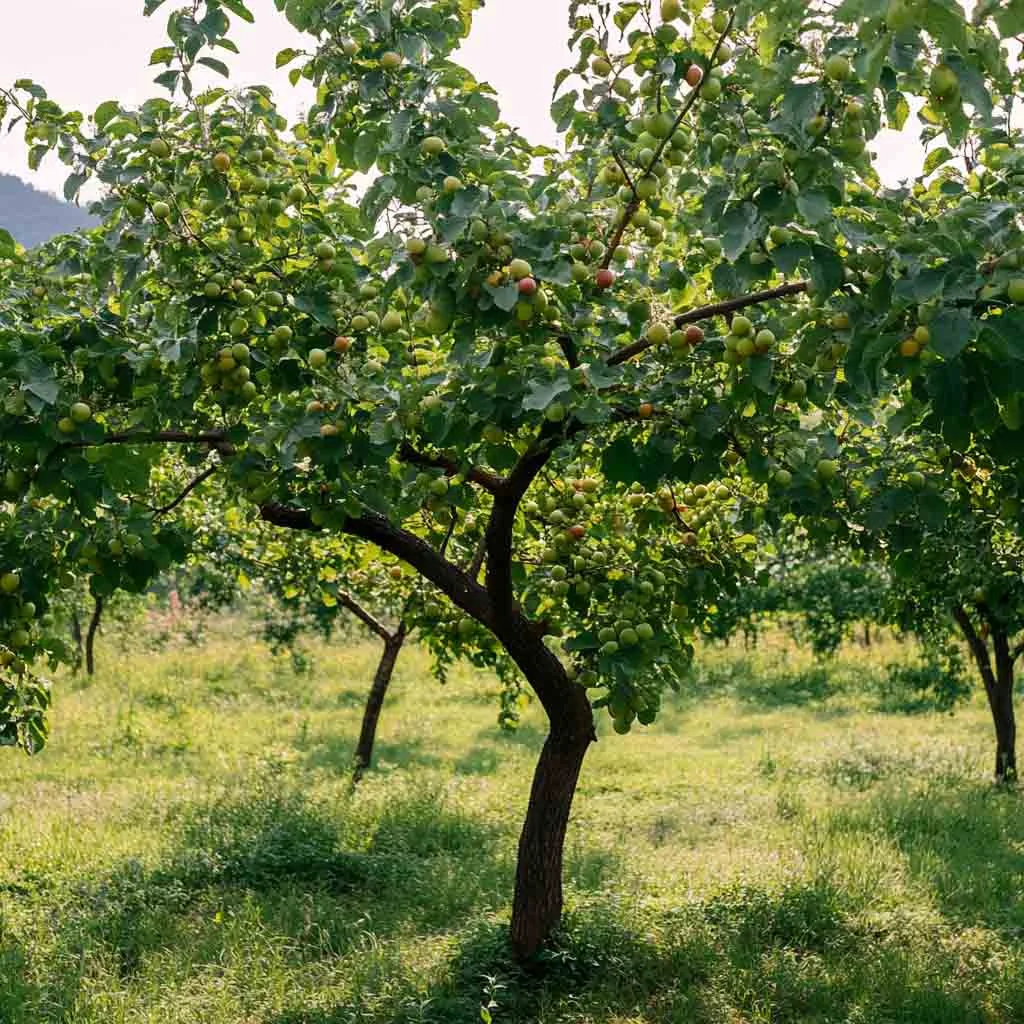
Warning: the berries stain, but they taste like summer. And birds adore them.
- Fast growers, ideal for wildlife gardens
- Tolerates poor soil and minimal care
- Produces juicy berries for weeks
Things to Know:
- Black mulberries are best for flavor
- Prune to keep height manageable
- Great shade tree with edible benefits
13. Loquat Tree (Eriobotrya japonica)
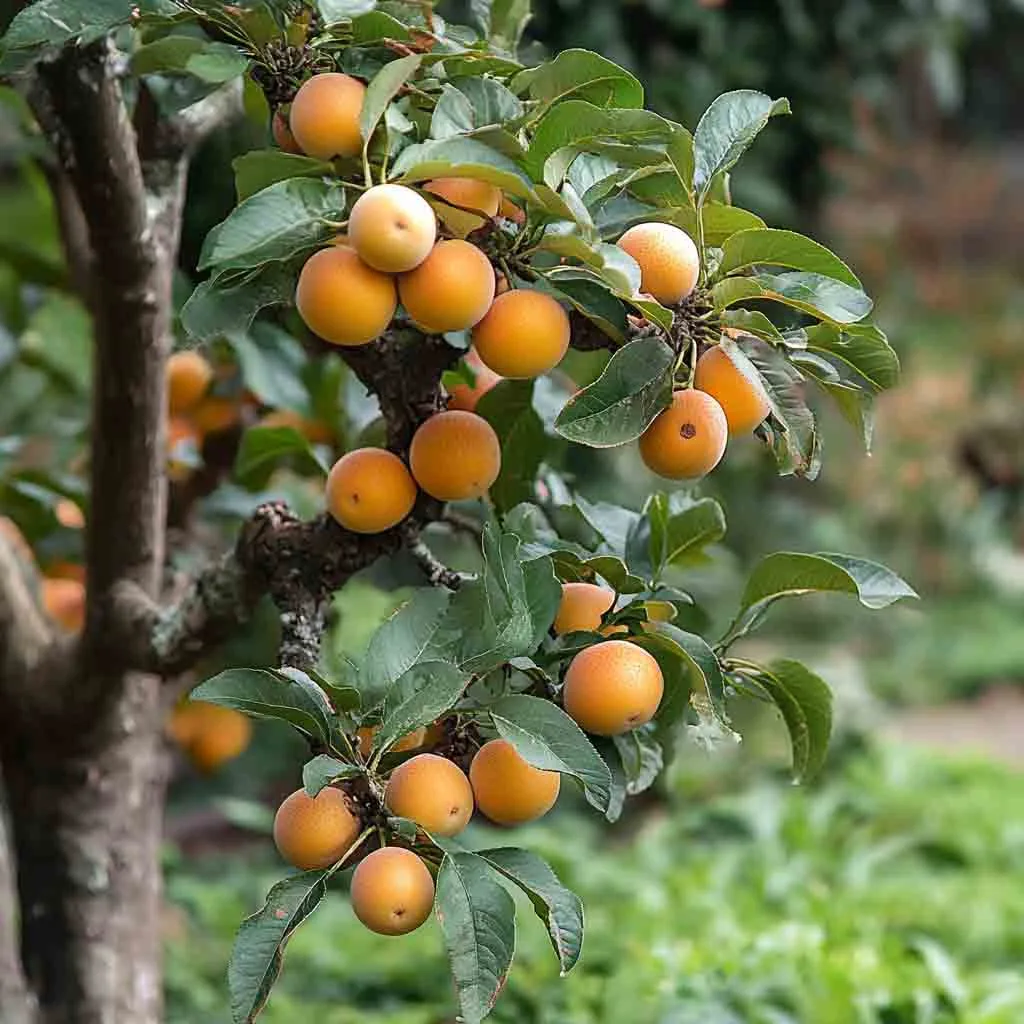
Loquats bloom in fall and ripen early, so they don’t compete with your spring fruits.
- Evergreen tree with tropical vibes
- Fruit tastes like a citrusy peach
- Grows well in Zone 8 if protected from hard frost
Key Pointers:
- Needs sun and shelter from wind
- Look for varieties like Gold Nugget or Big Jim
- Self-pollinating, but better with a buddy tree
14. Olive Tree (Olea europaea)
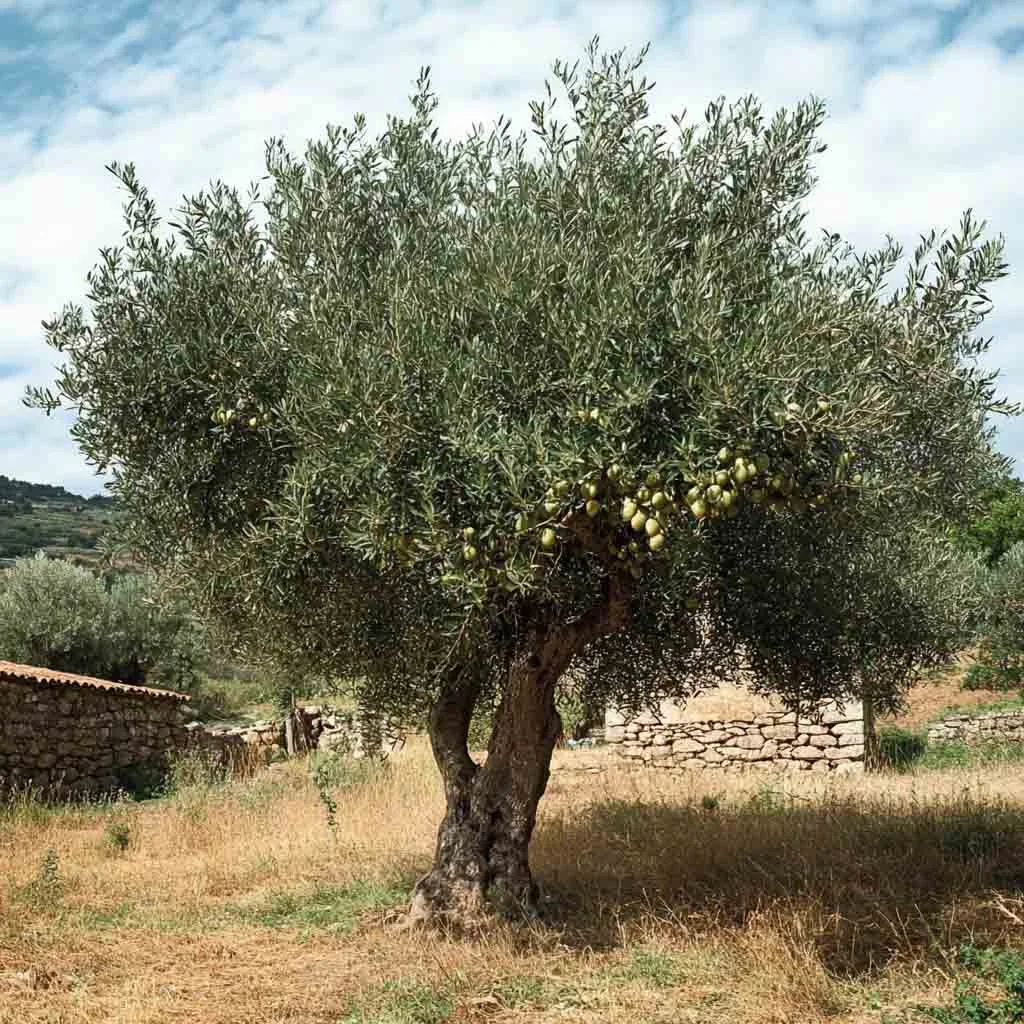
This one surprised me, I didn’t think olives would work in Zone 8, but they do!
- Drought-tolerant and heat-loving
- Some cold-hardy types survive Zone 8 winters
- Mostly grown for looks or small olive harvests
Top Picks:
- Arbequina (compact and productive)
- Mission (classic flavor)
- Frantoio (used for oil)
Important Tips:
- Needs full sun and good drainage
- Not for soggy spots
- Slow grower, but worth the wait!
Common Mistakes to Avoid in Zone 8 Fruit Gardening
Even in the “fruit-friendly” Zone 8, some pitfalls can mess up your harvest.
Here’s what to steer clear of:
- Ignoring chill hour requirements, Match trees to your zone’s average chill hours.
- Overwatering, Especially for trees like figs, pomegranates, and olives. They hate soggy roots.
- Skipping pollinator buddies, Some trees need a partner tree to bear fruit.
- Planting too deep, Roots should be just below surface level, not buried.
And remember, location matters. Full sun and well-drained soil make all the difference!
FAQ Section
What is the best time to plant fruit trees in Zone 8?
Late winter to early spring is ideal. This gives your tree time to settle before the heat of summer. Fall can also work, especially for evergreens like citrus or loquats.
Do I need to plant two trees for fruit?
Some trees are self-pollinating (like figs, peaches, and some cherries). But others, like apples and pears, usually need a compatible partner to ensure good fruit production.
How often should I water fruit trees in Zone 8?
New trees need regular watering the first year, about once a week, depending on rainfall. After that, they prefer deep, occasional watering rather than frequent shallow ones.
Can citrus trees grow in Zone 8?
They can if protected! Cold-hardy varieties like satsumas, Meyer lemons, or kumquats work best. Use containers, mulch well, and bring them indoors during harsh cold snaps.
How long before fruit trees start producing?
It depends on the type:
- Figs, peaches, plums: 1–3 years
- Apples, pears, persimmons: 3–5 years
- Pomegranates, olives: 2–4 years
Patience is key, but totally worth it!
Wrapping It Up: Your Backyard Orchard Awaits
Growing fruit trees in Zone 8 feels like having your own snack aisle outside. There’s something deeply satisfying about picking a sun-warmed peach or crisp apple right from your tree.
Plus, once you get the hang of their care, these trees reward you season after season.
So grab a shovel, pick a sunny spot, and get planting, your backyard is about to get a whole lot tastier.

